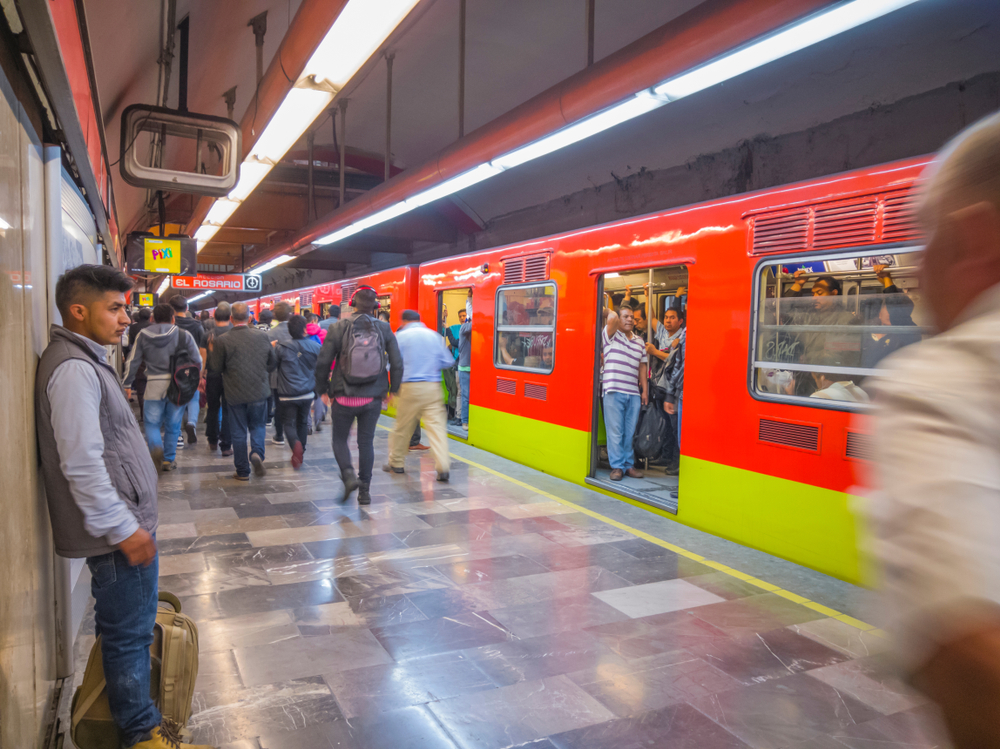The media is coming around to the idea that the hyperloop is not a near-term solution for the country’s transportation woes. It’s too little, too obvious, too late.

If you watched The Pentaverate, a made-for-Netflix mini-series created by Mike Myers, you might think the hyperloop is still a viable option for quickly moving people and cargo across great distances. The series, based on a concept briefly discussed in a scene from the 1993 film So I Married an Axe Murderer, hinges on the use of a transit system called “The Musk” in a clear nod to the hyperloop. The show is trying so hard to make the hyperloop seem futuristic that the soundtrack even includes theme music created by 1990s-era electronic music duo Orbital whenever characters ride The Musk to cross the Atlantic Ocean.
As it turns out, the hyperloop fits well with pop culture moments that have come and gone.
The hyperloop has had its critics since Elon Musk first pitched the idea in 2012, but it’s also had plenty of support from seemingly authoritative corners of the media devoted to science and exploration—like the Discovery Channel, for example, and Smithsonian Magazine.
The idea of using pneumatic tubes for super-speed transportation is hardly new, despite that futuristic veneer ideas tend to take on when Elon Musk repurposes them. The idea has actually been around since the 17th century, including a proposal that came close to gaining legislative support in New York in the mid-19th century.
While the media, Musk’s own use of social media made, and a few high-profile test runs, including a test by Virgin Hyperloop that carried human cargo at 107 miles per hour, made it seem like maybe a new generation of engineers and “inventors” had figured out how to take the idea from concept to reality—the news of late has been more typical of centuries of experience. Virgin Hyperloop, the same company that ran the first test run with humans onboard, laid off almost half its staff earlier this year and announced a switch to cargo, not human, transportation. A New York Times article with the blaring headline, “Is the Hyperloop Doomed?” indicates that the idea is still mostly an aspiration.
The New York Times article neatly summarizes the hyperloop narrative by quoting planning faculty from the University of California, Los Angeles.
“Time and again you see technological innovations attracting a lot of investment, and you can make a lot of money during the hype cycle,” said Juan Matute, deputy director of the Institute of Transportation Studies at the University of California, Los Angeles. However, the technology doesn’t anticipate the significant technical challenges associated with creating an entirely new infrastructure. “Then interest wanes,” Mr. Matute said.
Hyperloop interests are waning all over the world, from France to the United States to India, even while a few stragglers hold out for hope. “Hyperloop TT, based in Los Angeles, had as recently as 2019 promoted its work building a system in the United Arab Emirates, but has shifted to other projects, said Andrés De León, its chief executive,” writes Eric A. Taub in the same New York Times article. “Its U.S. project furthest along in development is planned for the Great Lakes region, where the company is looking for private funding to conduct a two-year environmental study before trying to build out the route.”
If the hyperloop is doomed as the article suggests, it will be too late for the numerous state and local governments that put skin into the hyperloop game, including the states of Colorado, Texas, Illinois, and Ohio, to get taxpayers’ money back, so the whole episode is far from innocent. All this wasted breath on the hyperloop could have been devoted to public transit, for example—with its numerous environmental, social, and economic benefits. Public transit agencies all over the country are sorely in need of long-term funding solutions to address operator shortages and service cutbacks. Cities all over the country are sorely in need of the zoning reforms and development investments that make public transit possible.

While the hyperloop is seemingly headed for a much different role in the future than the one envisioned by Musk and other boosters, the willingness of politicians and pop culture to uncritically buy into hype will continue to create obstacles for the actionable, proven solutions for the most persistent and difficult challenges of contemporary life.
Still, some skeptics of hyperloop technology quoted in the New York Times article say the idea is worth pursuing, both as a source of usable lessons and as a cautionary tale. "Hyperloop is a very nice project for students [….] You’re training very good engineers by working on this,” says Carlo van de Weijer, director of smart mobility at Eindhoven University of Technology in the Netherlands."
"Nice" is a generous way to describe the hyperloop's contribution to the transportation planing discussion. The next soundbite from van de Weijer is much more telling: “Hyperloop does not solve a significant problem that justifies it. While small test tracks might be built, there will not be a hyperloop system constructed that will transport either goods or passengers — or I’ll eat a tractor."
If only we could get Mike Myers, the Discovery Channel, and Smithsonian Magazine to ignore shiny objects and imagine the kind of world that relies on real, available solutions, we might actually get somewhere.

Planetizen Federal Action Tracker
A weekly monitor of how Trump’s orders and actions are impacting planners and planning in America.

Chicago’s Ghost Rails
Just beneath the surface of the modern city lie the remnants of its expansive early 20th-century streetcar system.

Amtrak Cutting Jobs, Funding to High-Speed Rail
The agency plans to cut 10 percent of its workforce and has confirmed it will not fund new high-speed rail projects.

Ohio Forces Data Centers to Prepay for Power
Utilities are calling on states to hold data center operators responsible for new energy demands to prevent leaving consumers on the hook for their bills.

MARTA CEO Steps Down Amid Citizenship Concerns
MARTA’s board announced Thursday that its chief, who is from Canada, is resigning due to questions about his immigration status.

Silicon Valley ‘Bike Superhighway’ Awarded $14M State Grant
A Caltrans grant brings the 10-mile Central Bikeway project connecting Santa Clara and East San Jose closer to fruition.
Urban Design for Planners 1: Software Tools
This six-course series explores essential urban design concepts using open source software and equips planners with the tools they need to participate fully in the urban design process.
Planning for Universal Design
Learn the tools for implementing Universal Design in planning regulations.
Caltrans
City of Fort Worth
Mpact (founded as Rail~Volution)
City of Camden Redevelopment Agency
City of Astoria
City of Portland
City of Laramie






























